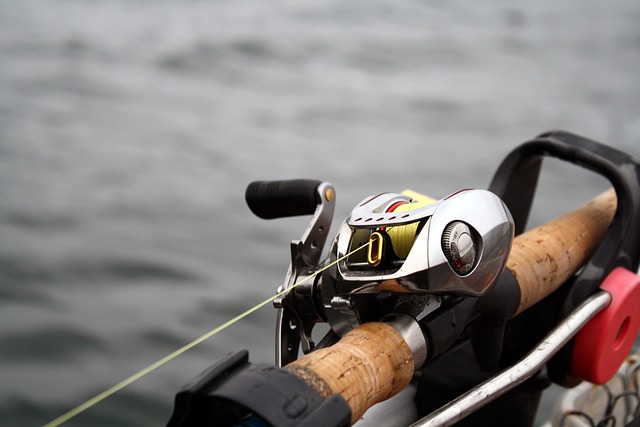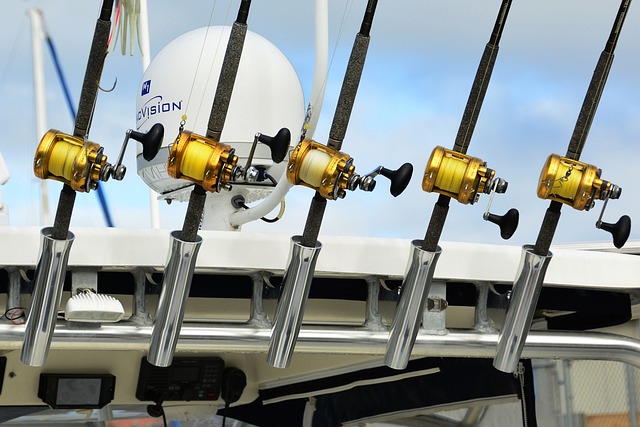A long-standing debate pit baitcasters against spinning reels among anglers. How can someone new to the sport ultimately determine the best with strong opinions on both sides? In reality, the two have distinct differences making it possible to incorporate each in different scenarios. Find comparisons between the two reels at https://www.outdoorlife.com/gear/baitcaster-vs-spinning-reel/#:~.
In saying that, the two are each superior for the categories they serve and the environments they’re meant for. The actual objective is to discern under which circumstances you’ll need to use which rod and then work to master that particular one for that specific experience.
Regarding complexity, the spinning reel is the more simplistic option while the baitcasting reel is more about complexity, ergonomics, and precision. Bass anglers covet these, especially for tournaments, but these come with an exceptionally high price point.
Let’s look at the baitcasting rods and the spinning rods individually to learn in which environments these are most successful and what distinct characteristics make them unique.
What Is A Spinning Reel
A spinning reel’s body sits in a fixed position, a vertical piston with a spool attached. The spool doesn’t rotate when “reeling. The bail arm feeds the fishing line onto the spool revolving around this component, keeping the line in a horizontal position.
Opening and closing the bail arm is a manual maneuver. These reels are always positioned below the rod with different handles so anglers can switch from a left to a right with a bolt adjustment.
The spinning reels range in sizes from micro for those who ice fish to those capable of nabbing a Blue Marlin. A high-quality option is usually constructed of carbon fiber and aluminum material, offering a lightweight. The saltwater variety comes sealed to keep the sand and saltwater from corroding the reel’ innards.
How Do Anglers Cast A Spinning Reel
The bail arm must be manually opened to cast a spinning reel with the line held taut with the angler’s finger to the spool. That line will be released close to the finish of an arced cast with the rod pointed in the direction of the designated target.
A spinning reel has the capacity to cast a lure of extraordinary length, either using a sidearm approach or overhand. The downside with this cast is its lack of accuracy after releasing the line. There’s no control over the speed on its path to the target.
A significant problem is line twisting when “reeling against the drag,” getting hung up, or the angler is battling with a fish. That can make the uncoil with the following cast almost like a “loaded spring.”
Avoiding it means “not reeling against the drag.” The maintenance for a spinning reel is relatively straightforward and simple, usually requiring merely a rinse with some clean, fresh water.
These are exceptionally versatile reels for use in almost any condition, deep water, shallow, and open water, with a range of sizes and capable of holding multiple types of lines. They can cast heavy lures or light exceptionally further than a baitcaster with room for error.
What Is A Baitcaster
Freshwater anglers recommend baitcaster rods, a quick albeit small variation of what you would consider a conventional rod seen with saltwater or times gone by. These are void of pistons for maneuvering a spool but rather work with a roller system that navigates the line over the spool horizontally, reminiscent of a winch.
At the reel’s base, a “thumb bar system” is responsible for engaging and disengaging the spool. These reels are situated at the top of the rod. Some models come fitted with a trigger grip that offers a greater sense of control with casting for the angler.
The priority with the design is that the angler has optimum comfort and can conserve their motions. With the winch-like maneuvering, lure retrieval is less about an angler exerting energy and more about this being dispersed through the reel.
The ergonomics are appreciated when you need to cast a few thousand times in a day for a tournament.
How Do Anglers Cast A Baitcaster
The suggestion is it’s easy money casting a baitcaster since the only step is to hit a button and direct the cast. It might sound simple, but it might be a bit more complex than that.
There’s a “control system” governing the process using either a “centrifugal or magnetic unit of gears” that will designate the degree of freedom with the spinning process. With the heaviest lure, you want greater control or less freedom; the opposite is true for the lightest lures.
The control system uses functions with a dial that ranges on a scale from 1 being the freest to 10 being the tightest. You don’t want it either too tight or too loose. An angler will incorporate their thumb when reeling to maintain control over the spin and the entire cast.
“Thumbing” takes significant practice, forethought regarding line and lure size, and understanding the control system settings.
The baitcaster is less versatile than the spinning reel. Bass anglers primarily use this reel, as do a few “inshore saltwater anglers.” The ability to cast a multitude of times in a single day makes their precision a decisive advantage. These are also capable of holding exceptionally heavy lures as great as 25 lbs.
Final Thought
In describing each option, really, neither is superior to the other. The spinning rod and the baitcaster rod have their intended purposes, locations where they benefit anglers, and traits that make them outstand in their environment.
If you’re new to fishing and can’t make up your mind, it’s because you should probably have one of each or a couple of each since, they act as a complement to the other. Click here to learn if you can use a baitcaster on a spinning rod.
In any event, these are the two reels you want to master to be the most versatile on the water. You might struggle as a brand new angler with the baitcaster, it does deem the more complex of the two, but that doesn’t mean it’s impossible. Given the drive and sufficient effort, anything is possible.


